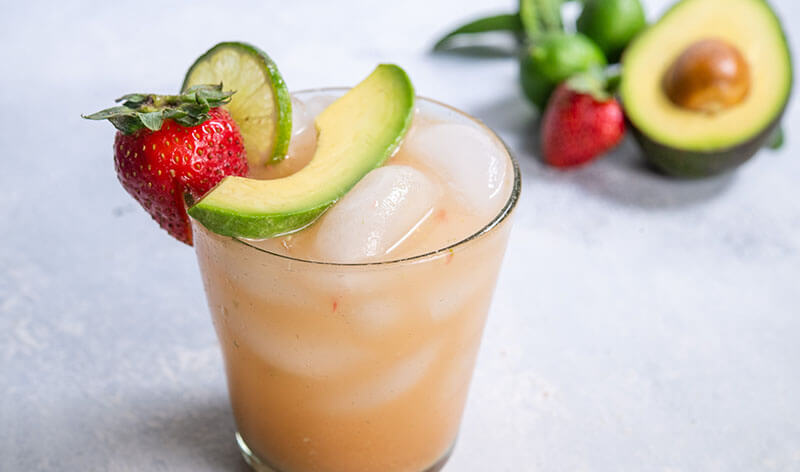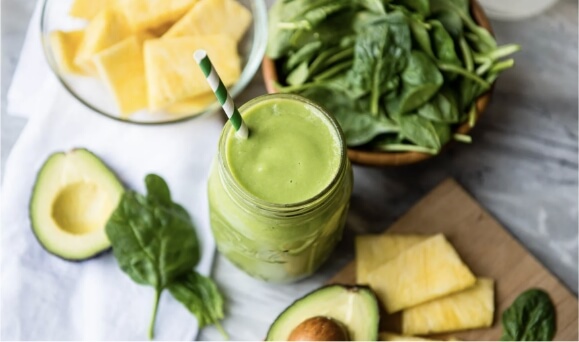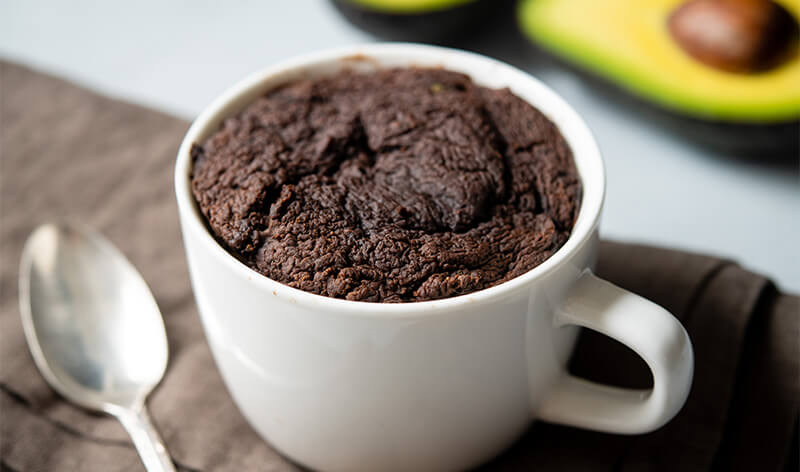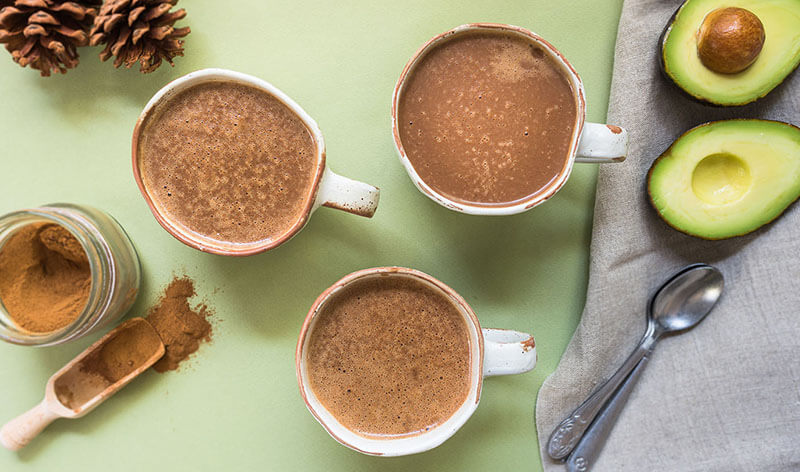To help support skin health as a college student, consider establishing a consistent skincare routine. This may include cleansing your face twice a day, using moisturizers suited to your skin type, exfoliating once or twice a week, and applying sunscreen daily.
Additionally, you may find it helpful to:
- Avoid touching your face: Keeping your hands away from your face may help reduce the transfer of dirt, oil, and bacteria, which are associated with breakouts and skin irritation.
- Incorporate foods featuring skin-friendly nutrients: Foods like avocados, spinach, blueberries, kale, and bananas provide essential nutrients like vitamin C, vitamin E, and monounsaturated fats that play a role in skin health.
- Maintain a consistent sleep schedule: Prioritizing regular sleep may help support skin appearance and overall health.
- Manage stress effectively: High-stress levels may be associated with skin concerns such as acne or irritation. Stress-reducing activities, such as exercise or relaxation techniques, may be beneficial.
- Stay hydrated: Drinking enough water and consuming hydrating foods may help support overall hydration, which plays a role in maintaining skin function.
- Consult a dermatologist for skincare concerns: A healthcare professional can provide personalized skincare recommendations based on individual skin needs.
Most college students will experience breakouts at one point or another. According to a 2004 American Academy of Dermatology study, acne is the most common skin condition in the United States. Stress and lack of sleep, two triggers for acne, are also standard parts of the college experience. So, how do you protect your skin while earning your degree?
Earning good grades and keeping your skin clear doesn’t have to be mutually exclusive. The right skincare routine and meal plan can help combat all those late nights at the library. Here’s our guide to taking care of your skin in an affordable and stress-free way.
Why College Can Be Tough on Your Skin
Between late-night study sessions, exam stress, and dining hall meals that aren’t always nutritious, your skin can take a serious hit in college. Sleep deprivation, fluctuating hormones, and an unbalanced diet can all contribute to breakouts and dryness.
Here’s a closer look at common skin concerns college students face and why they happen:

But the right nutrients can help support healthier skin. Avocados, for example, contain monounsaturated fats, which may help support skin hydration. The anti-inflammatory properties of these healthy fats may also aid in calming redness and irritation, making them a great addition to a skin-friendly diet.
The Link Between Stress and Breakouts
Ever notice how your skin tends to break out right before a big exam or presentation? That’s not a coincidence — it’s stress at work. When you’re feeling overwhelmed, your body releases more cortisol, triggering inflammation, which can worsen existing acne and slow down the healing process. A 2023 study published in the International Journal of Dermatology showed that students with high anxiety throughout the semester were more likely to have an impaired skin barrier and had more dark circles underneath their eyes.
Stress also has a way of messing with your habits. Maybe you’re too busy to wash your face before bed, drink more coffee than water, or grab junk food between classes. These little changes can make breakouts more likely. Keeping up with healthy skin habits can go a long way in preventing stress-related acne. One 2007 study published in the Journal of Dermatological Science even found that a diet with a low glycemic index correlated with lowered sebum production, reducing the amount of pore-clogging oils produced by the skin.
Another way stress contributes to breakouts is through oxidative stress, which occurs when there’s an imbalance between free radicals and antioxidants in the body. Free radicals are unstable molecules that have been associated with damaged skin cells, leading to inflammation, weakened skin barrier function, and increased oil production — all of which can make acne worse. Chronic stress has been shown to increase oxidative stress, which may make the skin more vulnerable to acne and other irritation.
Late-Night Study Sessions and Skin Health
Late nights might help you cram for exams, but they’re rough on your skin. When you don’t get enough sleep, your body may produce more cortisol, which can lead to more oil and inflammation. Sleep deprivation also slows your skin’s natural repair process, meaning any pimples, redness, or irritation you already have will likely take longer to heal.
On top of that, lack of sleep can affect circulation, which may influence the appearance of dark circles and puffiness. That “tired” look isn’t just in your head — poor sleep reduces blood flow to the skin, making it look dull and uneven.
Here are some easy steps to get better, more nourishing sleep
Your skin does most of its repair work while you sleep, so missing out on rest means missing out on a natural glow. A few changes to your nighttime routine can help your skin bounce back, even when you’re running on a tight schedule.
Crafting a Diet For Clear Skin in College
Good skin starts on the inside. You may notice more breakouts, oiliness, or dullness if you rely on dining hall pizza, sugary snacks, and late-night fast food. Most of these foods are processed and include refined carbs, triggering insulin surges that could affect the amount of oil your skin produces. On the other hand, whole, nutrient-dense foods are more likely to contribute to healthy, balanced skin.
Good skin starts on the inside. You may notice more breakouts, oiliness, or dullness if you rely on dining hall pizza, sugary snacks, and late-night fast food. Most of these foods are processed and include refined carbs, triggering insulin surges that could affect the amount of oil your skin produces. On the other hand, whole, nutrient-dense foods are more likely to contribute to healthy, balanced skin.
Avocados, for example, contain 5 g of monounsaturated fats per every 50 g serving that help reduce inflammation and support skin hydration. They also provide 3 g of fiber in every 50 g serving, which helps regulate your gut health. A well-balanced gut microbiome has been linked to fewer skin issues, making foods like avocados, whole grains, and vegetables a wise choice.
When navigating the dining hall, opt for lean proteins like grilled chicken or tofu instead of fried foods. Make your plate more colorful with vegetables like leafy greens, bell peppers, and tomatoes, which provide vitamins A and C, essential for skin repair. Swap white rice and pasta for whole grains like quinoa or brown rice to avoid blood sugar spikes. Add avocado, nuts, or olive oil-based dressings to your meals for extra nutrients that help support your skin.
Hydration is just as important. Instead of sugary sodas or energy drinks, stick to water, unsweetened tea, or sparkling water. Keeping snacks that contain skin-friendly nutrients like Greek yogurt, almonds, and berries in your dorm can also help you avoid processed junk food. These foods can provide antioxidants, vitamin C, and healthy fats that help your skin feel its best. Minor adjustments to your diet can keep your skin clear and healthy throughout college.
Adding Superfoods To Your Diet
You don’t need an expensive skincare routine to keep your skin healthy — what you eat plays a huge role in how your skin looks and feels. While there isn’t a scientific definition of superfoods, foods like salmon, broccoli, avocados, and blueberries contain vitamins and minerals that support skin health. Some of these include vitamins C and E, calcium, and niacin.
Avocados, for example, provide 6% of your DV of vitamin E per serving, an antioxidant that may lead to a reduction in markers of oxidative stress, according to a 2017 study by Oxidative Medicine and Cellular Longevity. While no one vitamin or mineral can negate the effects of oxidative stress, vitamin E may lessen the tangible effects of it.
Adding more superfoods to your meals doesn’t have to be complicated or expensive. Many dining halls and grocery stores offer options that can benefit your skin, such as:
Small dietary changes — like swapping processed snacks for whole foods — can help your skin stay clear and hydrated throughout college. Choosing foods that support skin health gives your body the nutrients it needs to fight breakouts, irritation, and dullness, even during stressful semesters.
Quick and Easy Snacks for Clear Skin
Eating the right foods can help keep your skin clear and healthy, even with a busy college schedule. Whether you need a quick breakfast, an easy snack, or a dorm-friendly meal, these recipes will help nourish your skin from the inside out.
Many of these recipes use avocado, an ingredient you can easily find at dining halls and local grocery stores. Learning how to choose the perfect avocado for your needs, how to store them, and how to ripen them faster is easier than you may think! A ripe avocado will have dark green to black skin and yield slightly to gentle pressure without feeling mushy. If you plan to eat them later, select firmer, unripe avocados and let them ripen at room temperature. For the best eating experience, store ripe avocados in the refrigerator to slow further ripening. When cutting, use the peel method to retain the nutrient-dense, dark green flesh closest to the skin.
Smoothies and Shakes
A refreshing smoothie can be a quick and easy way to nourish your skin while satisfying your cravings. These recipes help keep your complexion clear and hydrated.
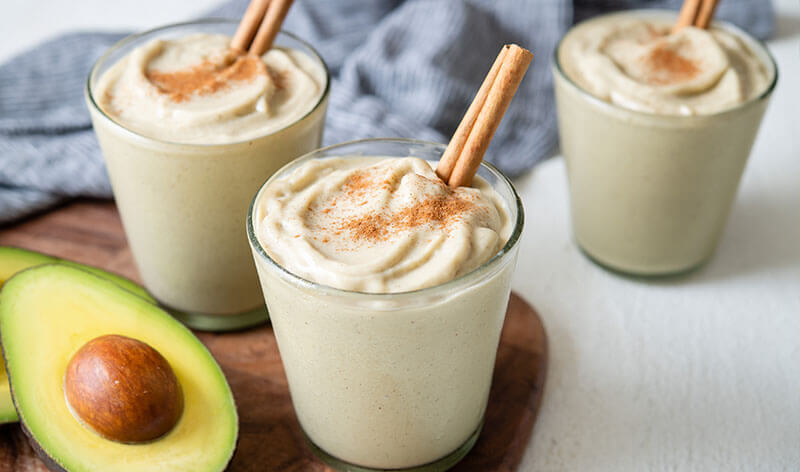
Avocado Banana Horchata-Style Smoothie →
Blend this up if you’re craving tropical flavor. This spiced smoothie hydrates with its monounsaturated fats and vitamin C.
These smoothies are easy to make and full of skin-loving nutrients, making them a great addition to your daily routine.
Savory Snacks
When you need a quick snack between classes or a late-night study session, these savory bites deliver both flavor and skin-friendly benefits.
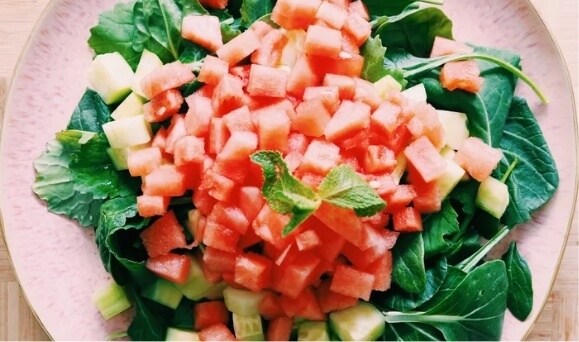
Vibrant Watermelon Cucumber Salad →
This is a quick, refreshing snack you can make in the dorm kitchen. Watermelon and cucumbers help support hydration, while spinach provides essential vitamin C.

Open-faced Traditional Bolillo with Avocado and Cottage Cheese →
This variation of avocado toast delivers 9 g of protein per serving. Pumpkin seeds and lime juice make it zesty.

Avocado Stuffed Jalapeño Poppers →
Who doesn’t love a good jalapeño popper late at night? Well, here’s a healthier version of the classic snack.
These snacks are easy to prepare, packed with nutrients, and perfect for keeping your skin glowing while tackling your busy schedule.
Sweet Treats
If you have a sweet tooth, these recipes let you indulge while giving your skin the nourishment it needs.

Bakery-Style Strawberry, Orange, and Almond Muffins →
Classic muffins get a healthy upgrade in this recipe. With all of the included fruits, you can rely less on added sugars, which can aggravate your skin.
With these skin-friendly treats, you don’t have to choose between satisfying your cravings and supporting a healthy complexion.
DIY Skincare for College Students
Skincare doesn’t have to be expensive to be effective. You can create DIY treatments with simple ingredients that nourish your skin and help combat breakouts, dryness, and irritation. Try these easy, affordable DIY masks and moisturizers to give your skin a boost.
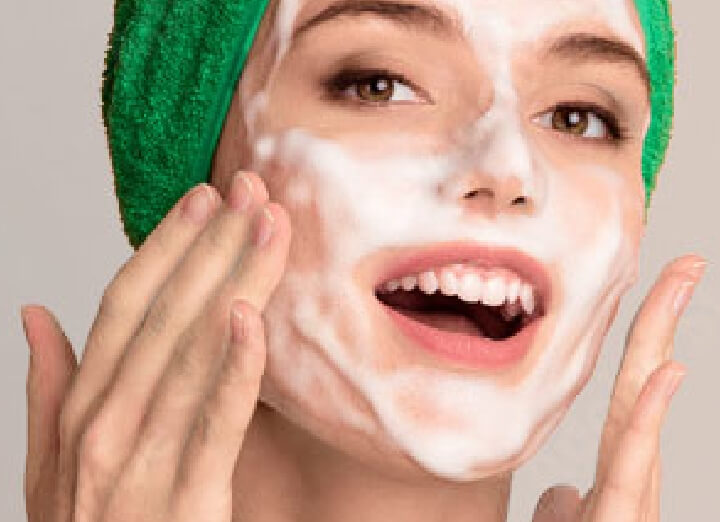
One of the key ways to clear out dry skin is to exfoliate periodically, depending on your skin type. If you have more sensitive skin, it’s best to use non-chemical products that are more likely to irritate your skin. This recipe can be a great option because it has oatmeal, which contains saponins that may help combat some of the bacteria on your skin and in your pores.
RECIPE:
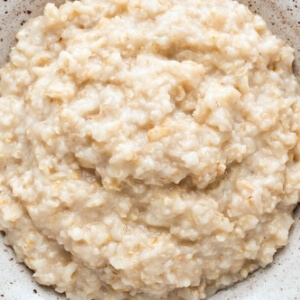
1 tsp of cooked oatmeal
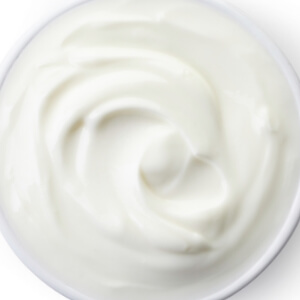
1 tsp of plain full-fat yogurt
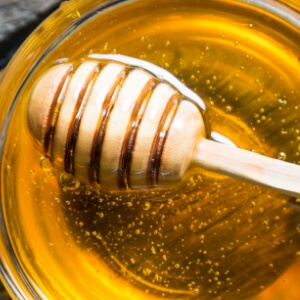
1 tsp of honey
HOW TO USE: Mix the ingredients into a smooth paste and apply evenly to your face. Leave it on for 15 minutes, then rinse with warm water.
This mask is excellent for dull, tired-looking skin. Turmeric may lead to lessened inflammation, while yogurt can gently assist the complexion with probiotics and lactic acid.
RECIPE:

1 tsp of honey

3–4 tbsp plain, unflavored yogurt
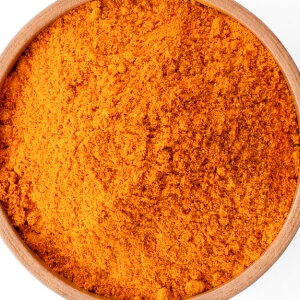
1 tsp of tumeric
HOW TO USE: Mix until smooth, apply evenly to the face, and leave on for 15 minutes. Rinse with lukewarm water for a brighter, more radiant look.
Late-night study sessions and stress can leave your skin looking dull and dry.
RECIPE:
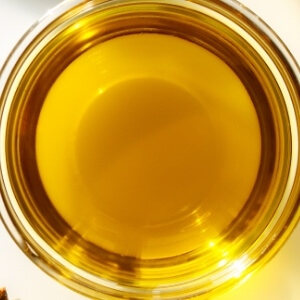
1 tbsp avocado oil
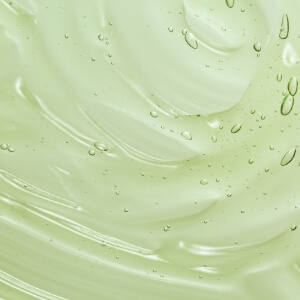
1 tsp aloe vera gel
HOW TO USE: Mix well and massage a small amount into your skin before bed. Let it absorb overnight for deep hydration and skin repair.
Taking care of your skin in college doesn’t have to be complicated or expensive. With the right habits — like eating nutrient-rich foods, managing stress, prioritizing sleep, and using simple DIY skincare — you can keep your skin looking its best, even through exams and late-night study sessions. Even small changes can significantly reduce breakouts and keep your skin hydrated.

